Register now to join Ufos Travel and make travel friends around the world
Login to follow friends and send messages. No Account? Register
×
Hanoi is the capital of Vietnam and the second largest city in Vietnam. Hanoi was first built in 621 AD. At that time, it was the seat of the Jiaozhi County of the Southern Dynasty. It was also known as the "Purple City", and later changed its name to "Luo City" and "Da Luo City". Since the 11th century, Hanoi has been the political, economic and cultural center of Vietnam. It is rich in historical relics and scenic spots, and enjoys the reputation of "the land of millennium cultural relics". So what are the fun Tourist attractions in Hanoi?
1. Hanoi Hoan Kiem Lake
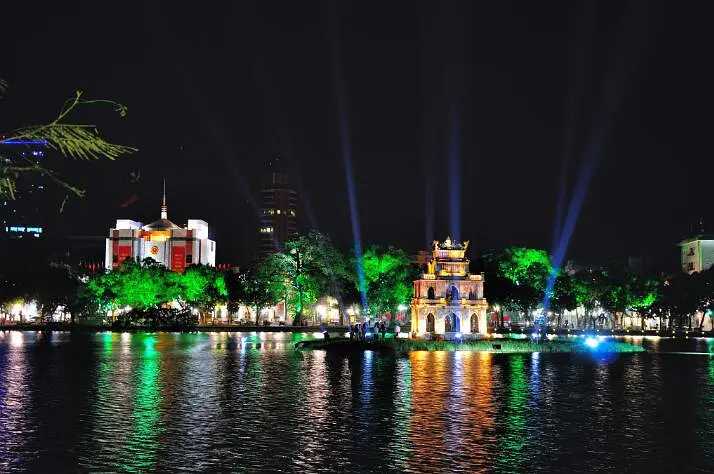
It is said that the Blue Mountain Uprising of Le Loi, the founding monarch of the Later Le Dynasty, was successful because he accidentally got a magic sword with special powers. It was this sword that made him invincible on the battlefield, defeated the army of the Ming Dynasty at its peak, established the Le Dynasty, and became the emperor. One day ten years later, when Le Thai Tou was enjoying the scenery on a boat on Green Water Lake, a golden turtle suddenly surfaced and said, "The enemy has been defeated. Please return my sword to me, Your Majesty!" As soon as he finished speaking, the sword on Le Thai Tou's waist suddenly shook and fell, and fell into the mouth of the golden turtle. So the golden turtle dived into the bottom of the lake with the sword in its mouth. Le Thai Tou and his accompanying ministers were very surprised and thought it was a spirit appearing, so they renamed Green Water Lake as Hoan Kiem Lake.
Today, Hoan Kiem Lake is a famous tourist attraction in Hanoi, the capital of Vietnam, and is known as the first scenic spot in Hanoi. Hoan Kiem Lake is located in the old central urban area of Hanoi. It was originally a tributary of the Er River, but later became a lake due to silt blockage in the river. The lake is more than 700 meters long from north to south and 200 meters wide from east to west. Although it is not large in area, the lake water is clear, elegant and quiet, with an average water depth of about 1.5 meters. The lakeshore is surrounded by green trees that shade the sky and block out the sun. There are ancient buildings such as the Pen Tower and the Hefeng Tower on the shore. The scenery is picturesque and intoxicating.
2. Tran Quoc Temple in Hanoi
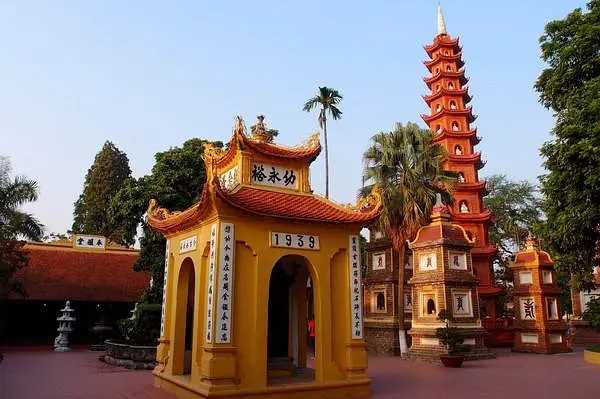
There are many famous ancient temples on the banks of the West Lake in Hanoi, Vietnam, among which the most famous one is Tran Quoc Temple. Tran Quoc Temple is not only the oldest temple in Hanoi, but also the most popular temple in Hanoi. The reason why Tran Quoc Temple is so famous is mainly because many eminent monks have given lectures or served as abbots here. Gradually, Tran Quoc Temple has enjoyed a higher and higher status among the many temples in Hanoi, attracting many pilgrims from all over the country to come and pay homage.
Tran Quoc Temple in Vietnam has a long history. It was built in the 6th century. It is located on a small peninsula on the bank of the West Lake in the north of Hanoi City, facing the Truc Bach Lake across the Youth Road. It has beautiful scenery, elegant environment and antique style. It is the most beautiful ancient building in the West Lake Scenic Area in Hanoi. The temple is surrounded by yellow walls and is full of lotus flowers. Every time the lotus flowers bloom, there are endless people coming to enjoy the flowers, which adds a lot of vitality to the ancient temple.
3. Hanoi Cathedral
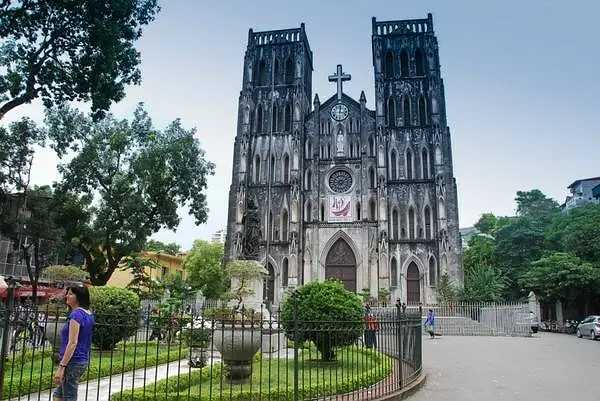
Hanoi Cathedral, also known as St. Joseph's Cathedral, is one of Hanoi's iconic French buildings and the oldest church in Hanoi. It is said that Hanoi Cathedral was built in imitation of Notre Dame de Paris, with the purpose of allowing French colonists far away from their homeland to feel close to their hometown in Vietnam. At present, the cathedral has become a popular tourist attraction in Hanoi. Here you can not only feel the vicissitudes of history, but also the cafes on both sides are a beautiful landscape.
The cathedral is about five stories high. There is a round wide bell at the top of the central door, which is densely covered with Roman numerals, and a cross symbolizing Catholicism stands on the top. In front of the church is a small square with landscape plants planted in the square. There is a statue in the center, holding a child in his left hand and holding a long cross in his right hand.
4. Hanoi Temple of Literature
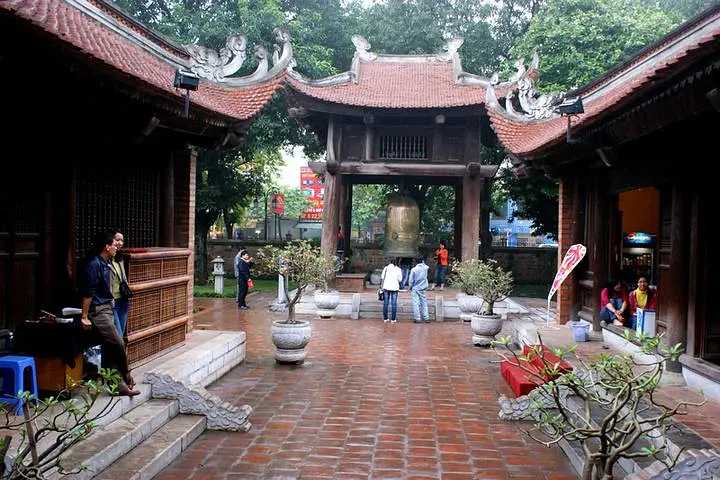
Hanoi Temple of Literature is a typical Chinese-style building, covering an area of more than 26,000 square meters. It is the largest existing temple of literature in Vietnam. Both the courtyard layout and architectural style are exactly the same as those of the temple of literature in China. The Hanoi Temple of Literature was built in 1070 and has a history of nearly a thousand years. It was built by Emperor Li Thanh Tong of the Vietnamese Li Dynasty, who advocated Chinese Confucianism, to worship Confucius and 72 sages, as well as great Confucian scholars in Vietnam, and to allow the descendants of royal relatives to study here.
After hundreds of years of vicissitudes, the Hanoi Temple of Literature has changed from the country's highest institution of learning to a popular tourist attraction. Every Spring Festival, the Hanoi Municipal Bureau of Culture holds a grand Confucius worship ceremony and traditional cultural activities such as calligraphy and painting exhibitions, chess competitions and cockfighting in the Temple of Literature, attracting a large number of domestic and foreign tourists to watch.
5. One Pillar Pagoda in Hanoi
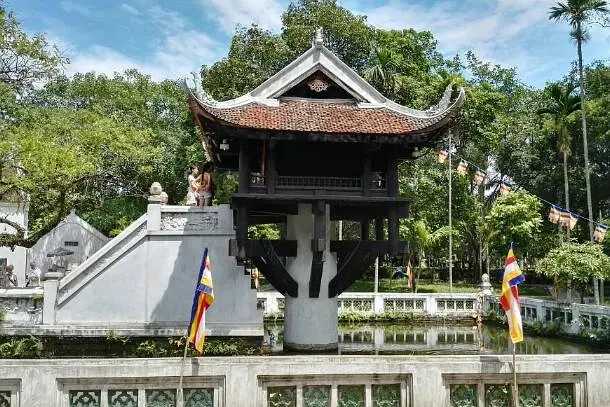
One Pillar Pagoda, also known as Yanyou Temple, is also called Lotus Terrace. Located in the southwest of Ba Dinh Square in Hanoi, Vietnam, it was built in 1049 and is a famous historical site in Hanoi. Although the One Pillar Pagoda is a small temple, it is famous and well-known overseas, and it is very popular, with pilgrims coming and going every day.
Unlike other temples, the One Pillar Pagoda does not have towering ancient trees, a magnificent main hall, or the lingering sound of monks chanting sutras, or even a courtyard wall. It only has a pond surrounded by railings, called Lingzhao Pond. A single pillar in the pond supports a temple high up, like a golden rooster standing on one leg.
6. West Lake in Hanoi
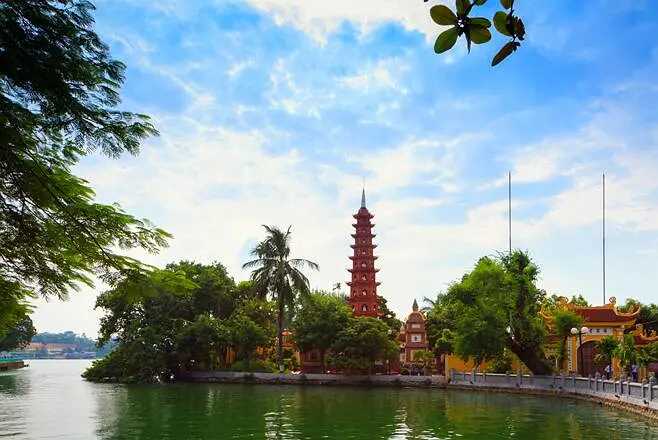
West Lake is the largest lake in Hanoi. It was originally a tributary of the Red River. After the river was diverted, it became a lake. The West Lake covers an area of 500 hectares, and the road around the lake is 17 kilometers long. There are a large number of peach trees planted near Xihu. Whenever the peach blossoms are in full bloom, there are endless tourists.
Today, West Lake is known as the green lung of Hanoi. Yachts are rippling on the lake, green willows are hanging on the embankment by the lake, and flowers are blooming on the road around the lake. The bustling tourists and pedestrians have added brilliant colors and lively vitality to this ancient city.
7. Hanoi Thirty-six Ancient Streets
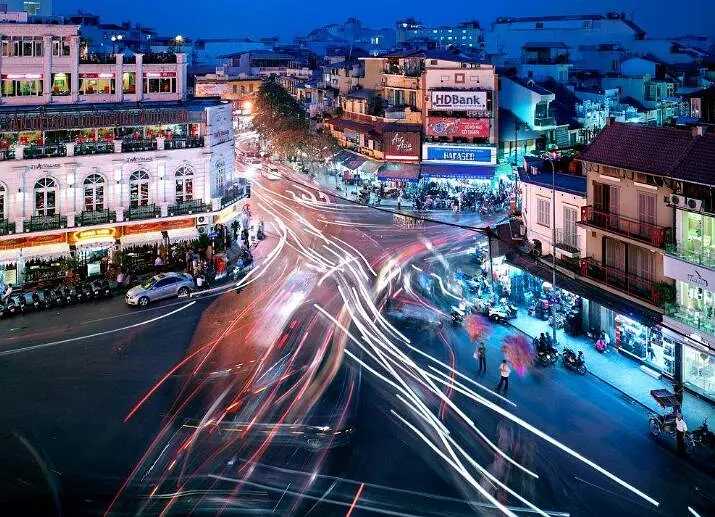
Hanoi Thirty-six Ancient Streets are located beside the Hoan Kiem Lake. As the name suggests, the Thirty-six Ancient Streets is a region name formed by the combination of thirty-six ancient streets. The Thirty-six Ancient Streets sell a wide variety of goods and are very lively. Here, each street is not long, ranging from tens of meters to hundreds of meters, and the streets are intricate, like a big spider web. Each street has its own duties. Basically, each street only sells one type of goods, so each street is named after the goods it sells, such as the "Silk Street" that specializes in silk, the "Chinese Medicine Street" that specializes in Chinese medicine, and the "Watch Street" that specializes in watches, etc.
Thirty-six Ancient Streets, although it has a history of thousands of years, is still one of the most lively places in Vietnam. It brings together local customs and traditional culture, and the simplicity makes people deeply feel the unique spiritual culture. As former Vietnamese Prime Minister Nguyen Tan Dung said, without the Thirty-six Ancient Streets, the soul of Hanoi will be lost. Therefore, in the planning blueprint of Hanoi, the Thirty-six Ancient Streets have always been the primary area for cultural heritage protection.
|
|
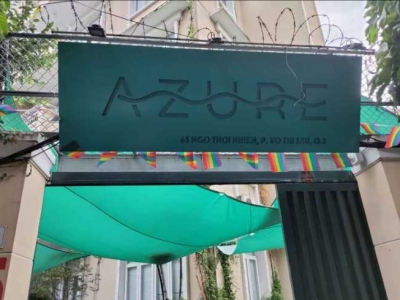 AZURE Bar in District 3 of Ho Chi Minh City, a pool bar where muscular boys gather
959 Read
AZURE Bar in District 3 of Ho Chi Minh City, a pool bar where muscular boys gather
959 Read
 Zion Sky Lounge, Luxurious nightclub in Ho Chi Minh City, has a beautiful view on the rooftop
500 Read
Zion Sky Lounge, Luxurious nightclub in Ho Chi Minh City, has a beautiful view on the rooftop
500 Read
 La Badiane French Michelin restaurant, one of the most cost-effective restaurants in Hanoi
458 Read
La Badiane French Michelin restaurant, one of the most cost-effective restaurants in Hanoi
458 Read
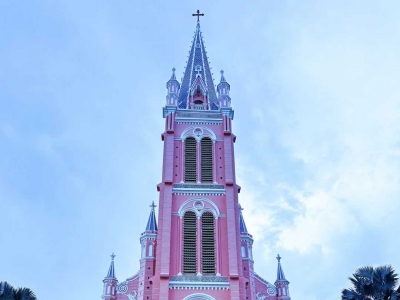 Reunification Palace, Pham Ngu Lao Street, Cafe Residence and Saigon Night Market Tour
733 Read
Reunification Palace, Pham Ngu Lao Street, Cafe Residence and Saigon Night Market Tour
733 Read
 Android APP
Android APP IOS APP
IOS APP